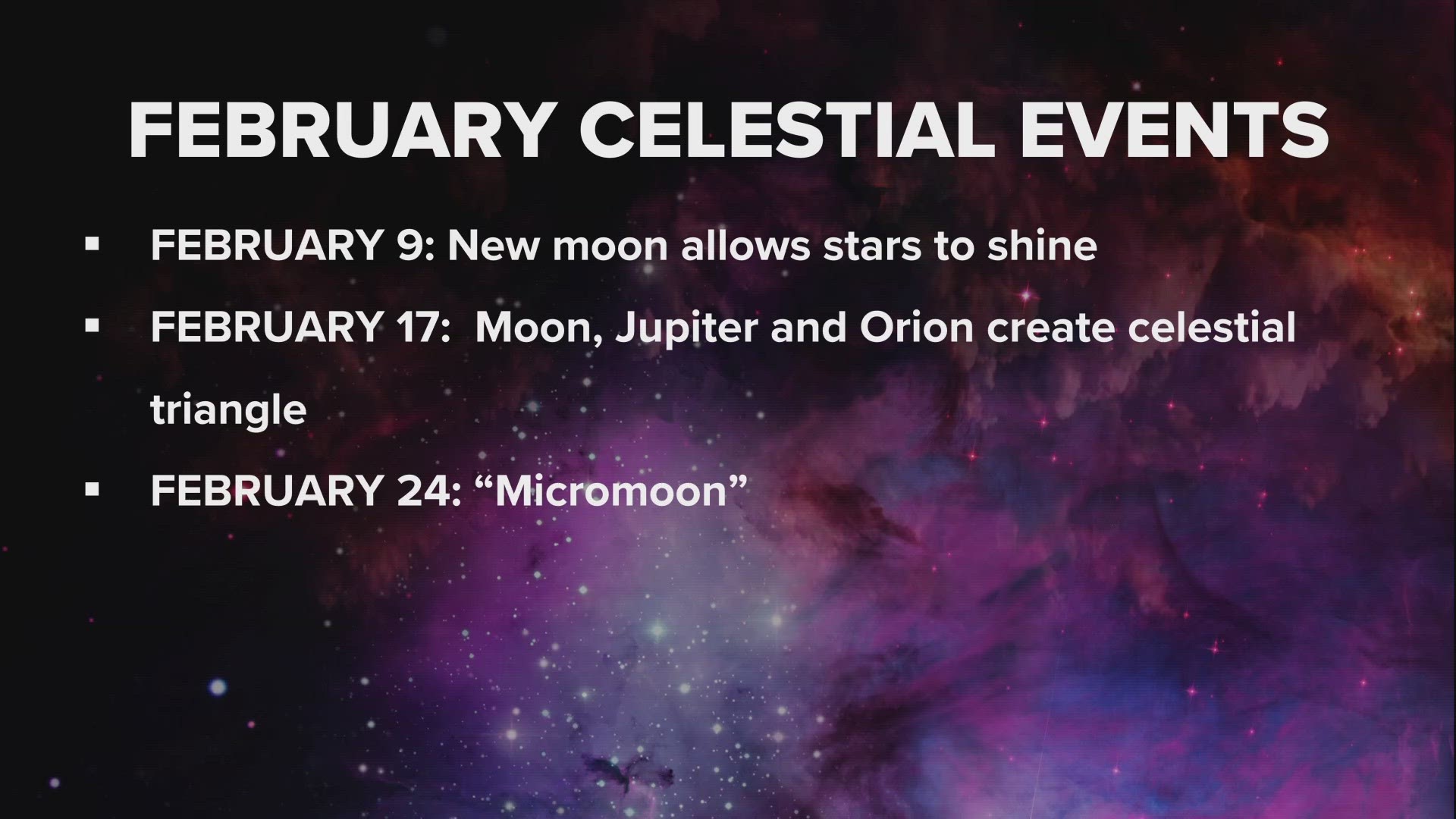PHOENIX — February has some must-see sights in the sky! And with this year being a leap year, there’s one more day and night of celestial goodness. So get these on your calendar, and note that no telescope is needed.
New moon allows stars to shine
On Feb. 9, the second weekend of the month, the moon will reach its new phase at a time when you don’t see the moon at night. The night sky will appear darker than any other time that month, which means the stars will have an extra sparkle. Also, during winter months, the amount of moisture in the sky is far less than during the monsoon season, creating an even more vibrant canvas for the stars to shine. While new moons happen every month, the timing in February allows for the stars to take the show, rather than the moon.
VERSIÓN EN ESPAÑOL: Eventos celestiales para observar en febrero sin necesidad de un telescopio
Moon, Jupiter and Orion create celestial triangle
Later in the month, Feb. 17, the moon, Jupiter and Orion will form a glowing triangle in the sky. The moon will sit at the top point with Orion to the southwest, and Jupiter to the east. Deeper into the month, the moon will appear farther away from Orion and Jupiter.
'Micromoon'
Finally, a “micromoon” will make an appearance. As the moon orbits Earth, at times it is closer to our planet, known as perigee. At times when it's farther away, it's called apogee. On Feb. 24, the moon will be full but coincides with a time when it is farther away from our planet. Experts say this is called a “micromoon” and appears 14% smaller and 30% dimmer than a supermoon. (For reference, supermoons happen during perigee.)
Like all full moons, there are nicknames for the Feb. 24 moon. Snow Moon, Bald Eagle Moon, Bear Moon, Hungry Moon and Goose Moon top the list.

